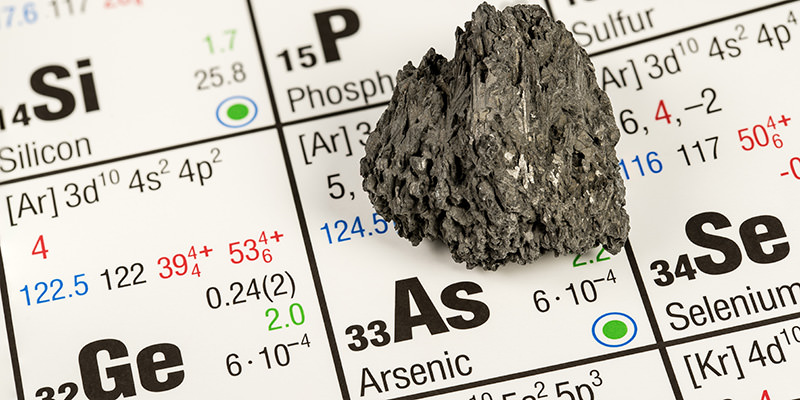Promise, this isn’t a fear-mongering post. But you could be drinking unsafe amounts of arsenic RIGHT NOW. Just kidding. Sort of.
Not too long ago, the University of Washington conducted a study of 65 wines from four of the major wine-producing states in the Union—New York, California, Washington, and Oregon. Turns out that all but one—wine, not state—contained levels of arsenic that actually exceed the amount of arsenic considered safe in drinking water.
That safe level, for those of us who aren’t up on our arsenic facts, is 10 parts per billion—a miniscule amount, so don’t freak out if you’re drinking a delicious glass of tap water. But the wines tested went almost 150% over the limit, with an average of 24 parts per billion. (The highest wine tested had a whopping 76 parts per billion of arsenic.) Washington State was apparently the worst offender in the study, producing wines with the highest levels of arsenic (possibly due to pesticide residue). Oregon, on the other hand, had the lowest levels of arsenic on average.
The study wasn’t the only evidence of arsenic in wine. BeverageGrades is a wine-analysis library run by Kevin Hicks, and their study of 1,300 bottles of California wine found arsenic levels that were also three, four, and five times as high as the EPA-designated arsenic limit for water. Unfortunately for those of us on a budget, Hicks also noticed a pattern in his study: “the lower the price of wine in a per-liter basis, the higher the amount of arsenic.” Meaning the savings on that Two Buck Chuck might not be worth it (well, at least their White Zinfandel).
So should you stop drinking wine from these states? Not necessarily. According to the University of Washington study author Denise Wilson, the real risk comes from either repeated consumption of the same arsenic-heavy wine(s) or regular consumption of arsenic heavy wine in addition to consumption of other arsenic-heavy foods. Yes, there are other arsenic heavy foods, including brown rice syrup, seafood, and apple juice.
How does arsenic get into your wine? Mostly rock erosion. Rocks can contain arsenic, and river and rain water can slowly erode those rocks and rinse the soil in that arsenic-containing residue. Again, we’re talking very, very low quantities here. Then again, Allan Smith of the UC Berkeley Arsenic Health Effects research program told CBS “arsenic is highly toxic…it has as many effects inside the body as cigarette smoking does.”
Again, before you go chucking that $50 bottle of California Cabernet (red wines tend to have higher levels, since their thicker skins absorb more heavy metals), you should note that Canada’s arsenic limit is 100 parts per billion. And we trust Canada, right? Also good to bear in mind, wine isn’t the only culprit here. According to Smith, “1 in 100 people who drink water [containing arsenic]throughout their life will die from the arsenic, ultimately, due to mostly cancers from it.”
Yes, cold comfort. And here’s some even chillier comfort: Cornell food science associate professor Gavin Sacks says arsenic isn’t something we should really worry about. “Arsenic in wine is not perceived as being a major health risk by regulatory bodies.” What we should worry about it stuff like copper. Which, yes, is also possibly in our drinking water.
So what’s the resolution here? A lawsuit was filed implicating several California winemakers, with the goal of getting arsenic limits to a regulated 10 parts per billion and more prominent warning signs (there are apparently signs put up in stores, but not on bottle labels). And now that the issue is out there, there’s a chance consumer demand might also influence if and how winemakers regulate and notify consumers of the arsenic content in their wines.
Meanwhile you can keep a bit more track of your overall arsenic intake. Wilson says the amount of arsenic you’ll consume as a “core or frequent” wine drinker would make up only 10 to 12% of your daily arsenic limit. Other foods containing arsenic—tuna, milk, cereal bars—should be moderated.

